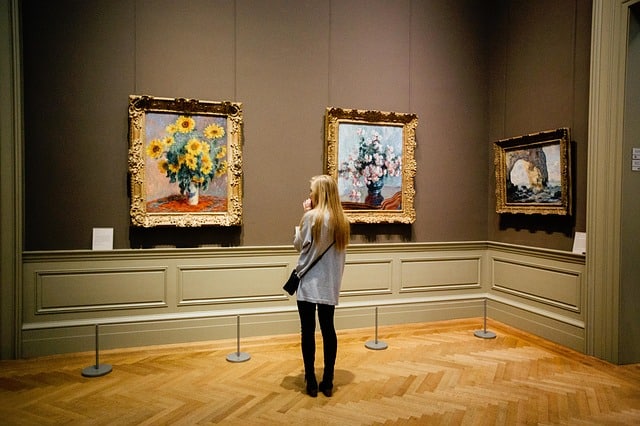When planning an exhibition or art show, it is important to start by being clear about what you want to achieve, what your intention is and what role the public will play in it. Although art exhibitions can be classified by their temporality, permanent or temporary, or by their content, thematic, general, anthological, monographic, commemorative, or playful, the conception of the objective is at the heart of their raison d’être.
The audience plays a key role in the approach to this objective, so thinking about reactions is a first step in generating an objective. Based on this, the concept, aesthetics and meaning of the works add up to a whole that allows categorizing the different types of art exhibitions:
Exhibition as a communicator of concepts:
This exhibition is born from an idea, a theory or a very specific message to be transmitted to the public and this all-encompassing concept is its main object. Beyond the plastic art or performance that materializes, the idea or message is the soul of the exhibition; it is supported by resources such as texts, images, videos, etc. that help the viewer understand the intention of what surrounds him/her in the exhibition and, in general, it seeks to have a final intention that generates reflection, educates or inspires those who attend the exhibition.
Immersive exhibition:
It evokes or exposes a specific moment or event of which the viewer is to be a part. Its main element is the creation of an immersive environment that generates interest and makes the visitor feel part of it. Its objective is to make the public feel symbolically transported and to make them feel part of something specific, making them feel sensitized and contextualized with the exhibition and its message.
Object-centered display:
In this exhibition the central object are the works of art that are located inside the exhibition site. It is expected that in this exhibition each viewer can make their personal interpretation of the works, but at the same time, they can have the support of the original intention of the artist; care must be taken that the aesthetic and plastic value of the work has greater importance than the supporting objects.
A curatorial work is done to allow the exhibition of materialized objects to impact the viewer in the best way possible, with the main objective of awakening the greatest possible interest in the exhibition. In this one, the selection of works is expected to capture the public’s attention and the representation of the works of art is expected to speak for itself, that is, to have enough power to make an intrinsic impact. Each work is given its own space within the exhibition, all previously planned, organized and researched to have as a final function the centralization of the object in the art show.
Exhibit focused on interaction:
In this type of exhibition it is not the idea, nor the concept, nor the work itself the objects that seek to captivate, but the intention is in the reaction and interaction that the viewer has with the space. It seeks to condition or generate a specific response from the public, using as a means stimuli that invite the participant to unify with what is around him and allows him to manipulate and interact with the objects he desires. The voice and opinion of the spectator thus become the central object of the exhibition, generating an environment in which the verdict, the interaction and the feelings of the public are the final purpose studied in the exhibition.
Hybrid exhibits:
Although every exhibition is born of an intention or a final objective that makes it pertinent to categorize them by their types and models, an art exhibition can have different reasons for being without the need to stick to a specific one, which allows the study of hybrid models, these being models that take elements from different general types of exhibitions and propose a list where they want to achieve different objectives, making this model to be categorized in one falls short. This can occur when there is no single purpose within a room, or when there is a large sample divided by rooms or moments that pose different models or purposes.
Understanding an exhibition goes beyond the aesthetic value it has: knowing how we relate to it leads us to get involved, because knowing that the viewer is part of it either directly or indirectly is essential, so you should always keep in mind that as an audience before an exhibition you are contributing to the artistic growth of a place.
The Duque Arango Gallery invites its public to participate in the art and to inhabit the gallery as an active and reflective object of the art exhibited through its art exhibitions.
Visit us Monday through Friday from 9:00 am to 4:00 pm and Saturday from 9:00 am to 12:00 pm.
Carrera 37 #10 a -34. El Poblado, Medellín.
Instagram: @duquearangogaleria





